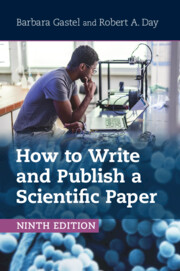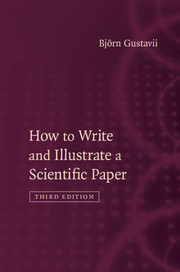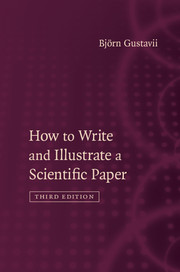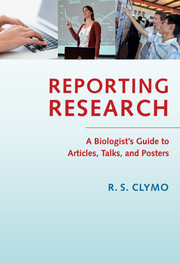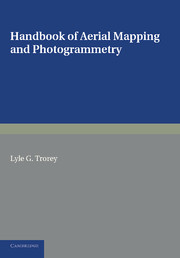How to Write and Publish a Scientific Paper
Thoroughly updated throughout, the authors of this classic guide put their advice into practice by keeping the book as clear and simple as possible. They provide early-career scientists and experienced researchers with practical support on writing for different audiences and getting published. This ninth edition retains the key material – including preparing text and graphics, publishing research papers, writing grant proposals, rights and permissions, and a wealth of advice on writing style – while new material includes new guidance on navigating copyright, presenting online, identifying co-authors, creating visual abstracts, and writing in English as a non-native language. Valuable appendices provide a ready reference on words and expressions to avoid, SI prefixes, useful websites, and a handy glossary. Postgraduate students and working scientists will want to keep How to Write and Publish a Scientific Paper at their desks and refer to it at every stage of writing and publication.�
- Gives a step-by-step guide to all aspects of writing a scientific paper, from the title through to the references
- Short chapters and humorous cartoons and anecdotes make this guidebook an enjoyable and easy read
- Includes expanded appendices and an updated list of useful website resources
Reviews & endorsements
'A very useful reference book for all scientists who want to have their work read - and that's all of us, isn't it?' Robert Connon Smith, The Observatory
Product details
April 2024Paperback
9781009477536
376 pages
228 × 153 × 18 mm
0.6kg
Available
Table of Contents
- Preface
- A word to international readers
- Acknowledgments
- Part I. Some Preliminaries:
- 1. What is scientific writing?
- 2. Historical perspectives
- 3. Approaching a writing project
- 4. What is a scientific paper?
- 5. Ethics in scientific publishing
- 6. Where to submit your manuscript
- Part II. Preparing the Text:
- 7. How to prepare the title
- 8. How to list the authors and addresses
- 9. How to prepare the abstract
- 10. How to write the introduction
- 11. How to write the materials and methods section
- 12. How to write the results
- 13. How to write the discussion
- 14. How to state the acknowledgments
- 15. How to cite the references
- Part III. Preparing the Tables and Figures:
- 16. How to design effective tables
- 17. How to prepare effective graphs
- 18. How to prepare effective photographs
- Part IV. Publishing the Paper:
- 19. Rights and permissions
- 20. How to submit the manuscript
- 21. The review process (how to deal with editors)
- 22. The publishing process (how to deal with proofs) – and after publication
- Part V. Doing Other Writing for Publication:
- 23. How to write a review paper
- 24. How to write opinion (letters to the editor, editorials, book reviews, and essays)
- 25. How to write a book chapter or a book
- 26. How to write for the public
- Part VI. Conference Communications:
- 27. How to present a paper orally
- 28. How to prepare a poster
- 29. How to write a conference report
- Part VII. Scientific Style:
- 30. Use and misuse of English
- 31. Avoiding jargon
- 32. How and when to use abbreviations
- 33. Writing clearly across cultures and media
- 34. How to write science in English as a foreign language
- Part VIII. Other Topics in Scientific Communication:
- 35. How to write a thesis
- 36. How to prepare a curriculum vitae, cover letter, and personal statement
- 37. How to prepare grant proposals and progress reports
- 38. How to write a recommendation letter – and how to ask for one
- 39. How to work with the media
- 40. How to provide peer review
- 41. How to edit your own work
- 42. How to seek a scientific-communication career
- Appendix 1. Selected journal title word abbreviations
- Appendix 2. Words and expressions to avoid
- Appendix 3. SI (Système International) prefixes and their abbreviations
- Appendix 4. Some helpful websites
- Glossary
- References
- Index.

